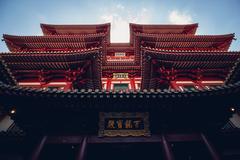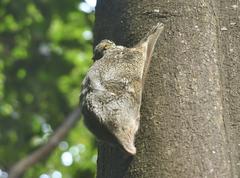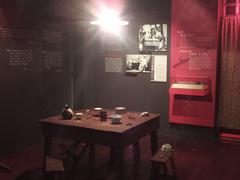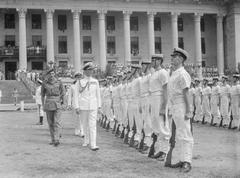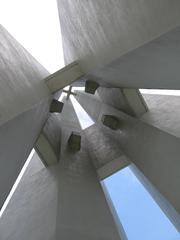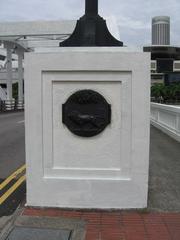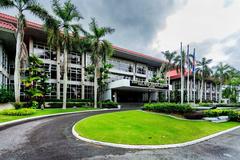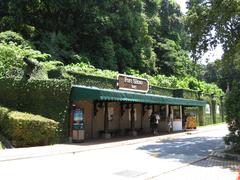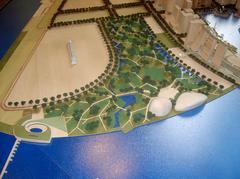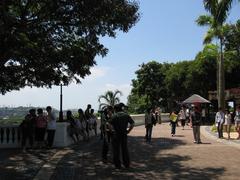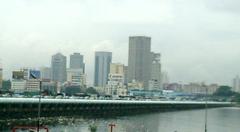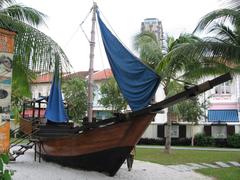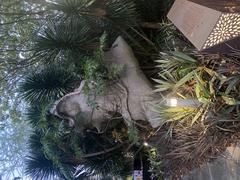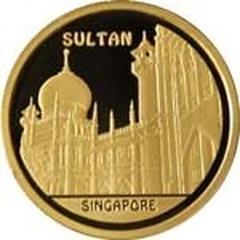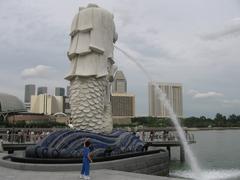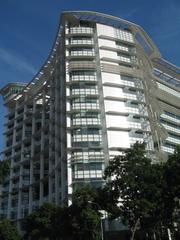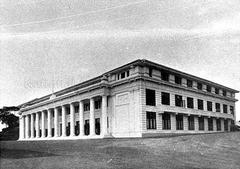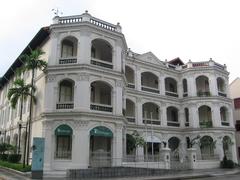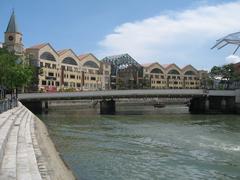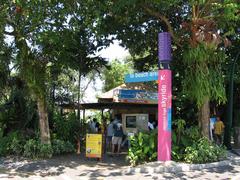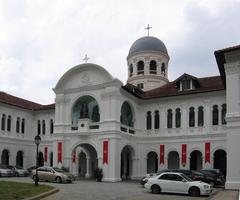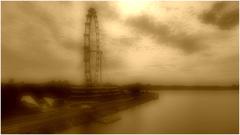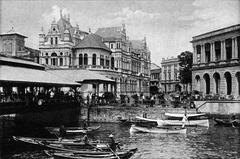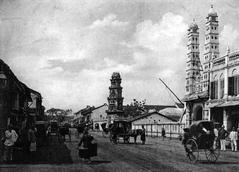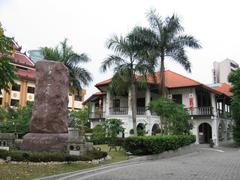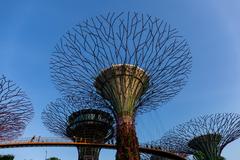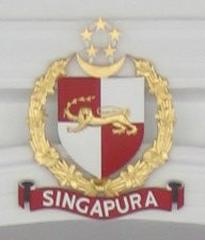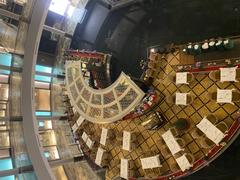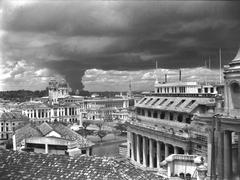Chinese High School Clock Tower Building: Visiting Hours, Tickets, and Historical Significance in Singapore
Date: 04/07/2025
Introduction
The Chinese High School Clock Tower Building stands as a prominent symbol of Singapore’s educational and cultural legacy. Erected in 1925 within the Bukit Timah district, this historic edifice is integral to the story of The Chinese High School—the first secondary school in Southeast Asia to offer Chinese-medium education. Funded by renowned philanthropist Tan Kah Kee and designed by the esteemed Swan & Maclaren firm, the Clock Tower is a testament to the aspirations, resilience, and unity of Singapore’s Chinese community during the colonial era and beyond (Hwa Chong Institution, Roots.gov.sg).
Today, the Clock Tower remains a centerpiece of Hwa Chong Institution, representing over a century of educational distinction and cultural identity. Its role as a National Monument underscores its historical and architectural value, while limited public access and special guided tours provide unique opportunities for visitors to connect with Singapore’s heritage (National Heritage Board, Wikipedia).
Table of Contents
- Overview and Historical Context
- Architectural Features and Innovations
- Wartime and Post-war Significance
- Educational and Community Impact
- National Monument Status and Preservation
- Visitor Information
- Events, Photographic Highlights, and Digital Engagement
- Nearby Attractions
- Frequently Asked Questions (FAQ)
- Summary and Additional Resources
Overview and Historical Context
The Chinese High School Clock Tower Building was conceived alongside The Chinese High School’s founding in 1919, marking a transformative moment for Chinese-medium education in Singapore (Hwa Chong Institution). By 1925, the school relocated to Bukit Timah, and the iconic Clock Tower—characterized by its four clock faces and octagonal dome—became an enduring symbol of the district (Roots.gov.sg).
The Clock Tower’s construction was made possible by generous community donations, notably from Tan Kah Kee, reflecting a collective commitment to educational opportunity and cultural continuity (Roots.gov.sg).
Architectural Features and Innovations
Designed by the prominent Swan & Maclaren firm, the Clock Tower is a rare surviving example of early 20th-century modernist and colonial architecture infused with Chinese motifs. Its octagonal dome, four-faced clock imported from England, and robust concrete construction ensure both aesthetic distinction and durability (Roots.gov.sg).
The structure’s symmetrical layout, wide corridors, and high-ceilinged classrooms promote natural light and ventilation—features tailored for Singapore’s tropical climate. Decorative Chinese roof tiles and balustrades subtly reinforce the building’s cultural mission (Roots.gov.sg). The interior’s iron staircase and grand foyer lead to classrooms and communal spaces central to the school’s daily life.
Wartime and Post-war Significance
During World War II, the Clock Tower was commandeered by both British and Japanese forces, serving as a strategic lookout point (Hwa Chong Institution). Despite suffering damages during the Japanese Occupation, the building was restored and became a silent witness to the post-war era’s vibrant student activism and Singapore’s evolving political landscape (Roots.gov.sg).
Educational and Community Impact
From its inception, The Chinese High School—later integrated into Hwa Chong Institution—set benchmarks for academic achievement and bilingual education (Wikipedia). Its rigorous curriculum, strong emphasis on Chinese language and values, and commitment to character development produced generations of leaders in government, business, and the arts (Everything Explained).
The Clock Tower’s classrooms have long been reserved for top-performing students and special academic programs. The institution’s evolution included milestones such as the founding of Hwa Chong Junior College (1974), Special Assistance Plan status (1979), and its merger in 2005 to form Hwa Chong Institution (Wonderwall.sg).
National Monument Status and Preservation
Gazetted as a National Monument in 1999, the Clock Tower Building is recognized for its historical, cultural, and architectural significance (AsiaOne). Conservation efforts focus on preserving original materials, the clock mechanism, and decorative features, while integrating modern safety and accessibility standards (Roots.gov.sg).
Visitor Information
Visiting Hours
- Exterior Viewing: The exterior of the Clock Tower can be viewed from the campus grounds during daylight hours.
- Guided Tours: Interior access is restricted but may be granted during special heritage events, open houses, or by prior arrangement.
- Special Events: Tours and open house dates are typically scheduled for heritage festivals and school anniversaries. Check the Hwa Chong Institution website and National Heritage Board for current schedules.
Tickets
- Admission: No ticket is required to view the exterior. Guided tours and special events generally require pre-registration but are usually free.
Accessibility
- Wheelchair Access: The campus provides ramps and accessible paths, but the Clock Tower’s upper levels (reached only by stairs) may not be accessible to all. Contact the school in advance for assistance.
- Location: 661 Bukit Timah Road, Singapore 269734.
- MRT: Tan Kah Kee MRT Station (Downtown Line), ~5-minute walk.
- Bus: Multiple routes serve Bukit Timah Road.
Visitor Guidelines
- Respect ongoing educational activities.
- Modest attire is recommended.
- Photography is permitted outdoors; seek permission for interior photos during tours.
Travel Tips
- Combine your visit with nearby heritage and nature sites for a fuller experience.
- Early mornings or late afternoons provide the best lighting for photography.
Events, Photographic Highlights, and Digital Engagement
- Annual Highlights: Founders’ Day, school anniversaries, and the Singapore Heritage Festival feature guided walks, exhibitions, and performances (Hwa Chong Heritage Trail).
- Photographic Spots: The exterior of the Clock Tower is especially photogenic at sunset. Balconies offer panoramic views during special tours.
- Virtual Tours: Digital 3D scans and virtual reality experiences are available on the Hwa Chong Institution and heritage websites (Roots.gov.sg).
Nearby Attractions
- Bukit Timah Nature Reserve: A popular hiking and nature spot (Visit Singapore).
- Beauty World Centre: Local shopping and dining.
- Other Heritage Sites: Former Bukit Timah Fire Station and the Bukit Timah Railway Station.
Frequently Asked Questions (FAQ)
Q: Can the public visit the Clock Tower Building at any time?
A: Public access is limited to exterior viewing and special guided tours or events.
Q: Is there an entrance fee?
A: No fee for exterior viewing; guided tours may require free pre-registration.
Q: Is the building wheelchair accessible?
A: Ground-level access is available, but upper floors are not accessible by lift.
Q: How do I get to the Clock Tower by public transport?
A: Tan Kah Kee MRT Station is the nearest; several bus routes serve Bukit Timah Road.
Q: Are guided tours available?
A: Yes, during special heritage events or by appointment; check official channels for details.
Q: Can I take photos inside?
A: Exterior photography is allowed; interior photography is permitted during tours with permission.
Summary and Additional Resources
The Chinese High School Clock Tower Building is a living symbol of Singapore’s commitment to education, multiculturalism, and heritage preservation. Its distinctive architecture and storied history offer visitors insights into the nation’s journey from colonial times through independence and into the present day. With its location in the lively Bukit Timah district, the Clock Tower is an essential stop for heritage enthusiasts and travelers alike.
For the most up-to-date information on visiting hours, events, and heritage programs, consult the official Hwa Chong Institution and National Heritage Board websites. Enhance your visit with digital tools like the Audiala app, and explore more national monuments and cultural landmarks through our related articles.
References
- Chinese High School Clock Tower Visiting Guide: History, Tickets, Hours & Bukit Timah Attractions, 2025, Roots.gov.sg (Reliving the History of Hwa Chong’s Clock Tower)
- Visiting the Chinese High School Clock Tower: History, Architecture, and Visitor Information, 2025, Roots.gov.sg (NHB Monuments)
- The Chinese High School Clock Tower Building: Visiting Hours, Tickets, and Historical Significance of a Singapore Historical Site, 2025, Wikipedia (The Chinese High School (Singapore))
- Clock Tower Building Visiting Hours, Tickets, and History – A Guide to Singapore’s Iconic Landmark, 2025, National Heritage Board (Hwa Chong Institution Heritage Trail)
- Hwa Chong Institution Official Website, 2025 (Hwa Chong Institution)
- AsiaOne, National Monuments Singapore: Chinese High School Clock Tower Building, 2025 (AsiaOne article)
- Everything Explained, The Chinese High School Clock Tower Building, 2025 (Everything Explained)



